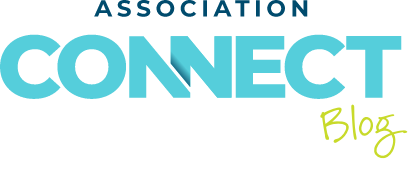What You Need to Know About Lead Generation Right Now

Distilled to its truest form, lead generation encapsulates all activities related to identifying and cultivating potential clients. It allows companies to develop a continuous sales pipeline and establish relationships with organizations or individuals who will, ideally, purchase your product or service.
The growth and success of a business or its campaigns relies on its ability to attract new customers while nurturing customer retention. Lead generation provides a chance to find the right target groups and qualified individuals within those groups.
When is a good time to launch a lead generation campaign?
Lead generation begins after you have identified the types of clients, businesses, and organizations you want to reach with your campaign. By completing this crucial first step, you will not be wasting any time tracking down contact information of people who will not be interested in what you have to offer.
What is a qualified lead?
A qualified lead will always consist of a person’s job title, email, and phone number. It seems simple enough, but you would be surprised by how easy it is to get this part wrong. By taking the time in the beginning of your campaign to vet a prospect’s contact information, the sales team will know exactly who they’re asking for.
How do you collect qualified leads?
In the 1995 film Heat, Robert DeNiro asks Tom Noonan’s character (Kelso) about the amount of cash on hand at a bank they’re planning to rob. Kelso says, “It comes to you, this stuff just flies through the air, they send this information beamed out over the place, you just got to know how to grab it.”
Now, we’re not condoning bank robbery, but the example above is to illustrate how easy it is to find qualified leads. Most companies and organizations will gladly list their C-level directors, managers, and employees on their websites, as it is good practice to show who you will be doing business with.
There are many avenues through which you can obtain a potential prospect’s contact information. As mentioned, the company’s website is a good place to start. Social media is another effective way to connect. Anyone with a Facebook or LinkedIn account can attest to the power of each of those platforms and their ability to network with like-minded professionals.
Other ways include perusing a company’s press releases, investor relations updates, or newsletters. Google can also be a powerful tool, as well as programs that you can pay for such as Hunter or Media Radar.
What are some challenges of lead generation?
In your research, you will more than likely come up against plenty of walls. People change and/or leave their respective positions in companies all the time. So, occasionally, the information you are able to obtain might not be current. Phone numbers can also be misleading. Are you calling the corporate headquarters? Or are you calling a regional office?
That brings us to another important component of lead research, and that is to figure out the correct occupational role(s) that your campaign will focus on. More often than not, marketing, communications, and public relations positions are amorphous, and multiple people might be in the same position.
While the challenges may seem insurmountable, just remember that the benefits will outweigh the negatives. The time you take to research before starting your outreach will save you the headache of having to deal with the ever-present gatekeepers of a company. Asking to speak to a person you do not have a name for will only end up getting you transferredto “Tammy in accounts receivable,” who has just gotten back from vacation, is not mentally prepared to handle your pitch, and will inevitably just hang up on you.
What are the benefits of lead generation?
If all goes well, you will reach people who are ready to buy. A healthy company will always have sales opportunities in the pipeline, and the more leads that convert, the higher your revenue. So, even though it may take some time and effort to identify qualified leads, access their contact information, and then connect with them for a conversation about your product or service, that effort often pays off.In closing, there are no hard and fast rules to follow in lead generation. It is a very cost-effective solution in helping not only grow your business but also build a tighter relationship between your sales team and potential clients.
Have an idea for an article? Let us know!
Receive the Association Connect newsletter
A proud company of The YGS Group | HQ: 3650 W. Market St., York, PA 17404
- Privacy
- YGS Association Solutions © 2025

